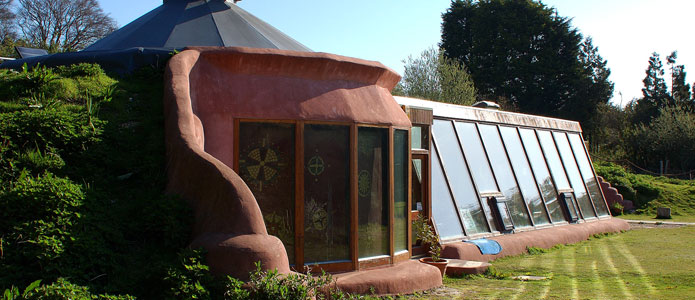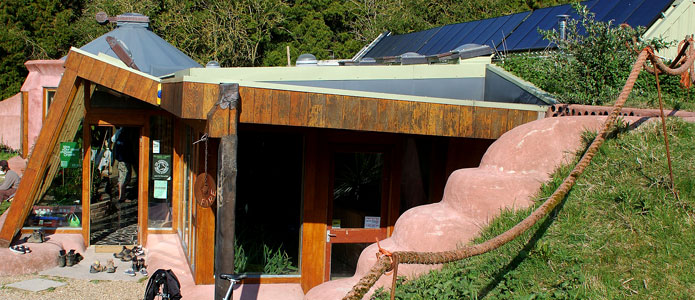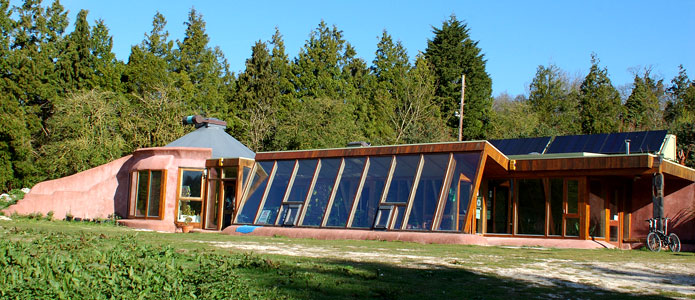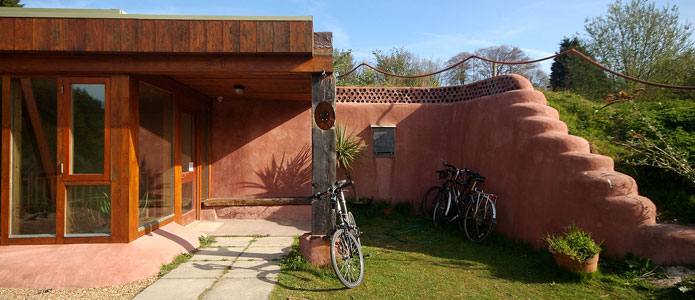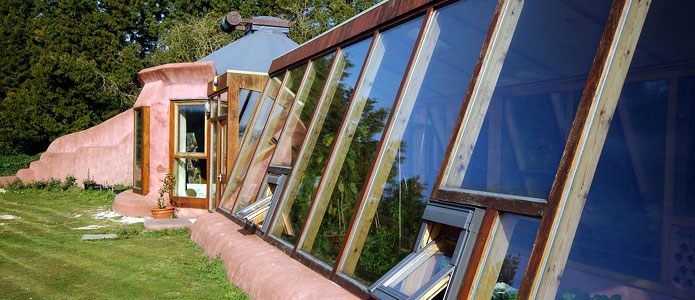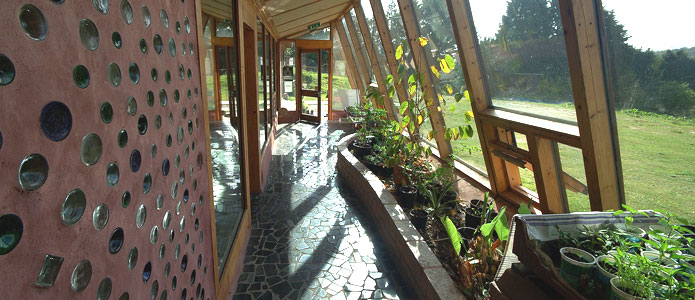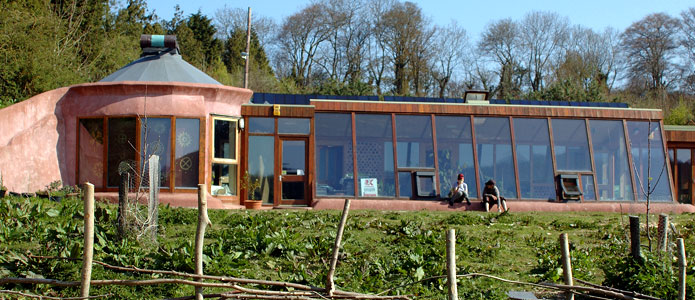Earthships and Brighton Permaculture Trust
Many of Brighton Permaculture Trust’s courses are held in Earthship Brighton, located in the heart of Stanmer Park.
Participants enjoy the venue as an example of permaculture in action, but why? What makes Earthship Brighton such an appropriate venue for a permaculture organisation?
To understand how Earthship Brighton can be seen as an example of permaculture design, it might be best to look first at what an Earthship is.
What is an Earthship?
An Earthship is a type of building that is built with earth rammed tyres that are often clad with adobe. These buildings often capture rain water and can be designed to clean with the grey and black water from the building.
Earthships often have solar panels to provide electricity and warm water. They often have a glass front which helps to passively heat the house, as well as grow food and provide space for the water filtration.
For more information on Earthships, we recommend Earthships in Europe by Mischa Hewitt, tutor on our three-day Self-building an Earthship course.
Earthship Brighton
Earthship Brighton was the first Earthship to be built in England and pioneered in Earthship building in the UK. As such, it was an experiment, and many lessons were learnt along the way. It is not a residential building but an educational one, and Brighton Permaculture Trust has used it as a venue for many of its courses. It was built into a hillside and has stunning views of Stanmer Park.
For more information on Earthship Brighton, visit Low Carbon Trust’s website.
Permaculture design and Earthships
Not all Earthships are permaculture designs, but there are many ways that an Earthship can be designed to meet the ethics. Let’s explore the ways that Earthship Brighton does.
Earth care
For Earthship Brighton, the earth from the hillside was used to ram the tyres. The tyres are normally a waste product but in this case were used as the building blocks. Glass bottles were also used to make walls in places like the bathroom.
The Earthship captures water from the roof and cleans this water using UV light as well as filtration beds and a reed bed. There is a low flush loo as well as a compost loo on site. Electricity can be generated by the solar panels and the wind turbine.
There are some ways, though, in which Earthship Brighton doesn’t meet the ethic of earth care. Some aluminium cans were used in the walls, which some may not consider the best use of this metal (better to recycle it). The water system has had to be re-designed to take into account the challenges of the Earthship not being lived in. The wind turbine is not well placed and is too small for the site. So Earthship Brighton isn’t perfect! But, then, few designs are.
People care
Many people who come on a Brighton Permaculture Trust course held at Earthship Brighton really like how the building looks and feels.
The Earthship is surprisingly warm for a building that relies on passive solar heating. There is a pellet burner in case it does get cold, but it is rarely used. The windows at the front and the roof vents let a lot of natural light into the building. The simple ventilation system (a series of window and roof vents) works so well that smokers cannot sit at the front of the building; otherwise, the smoke is drawn inside. Indoor air plants work to clean the air.
All these factors contribute to really pleasant learning environment.
More could be done to develop the landscape around the building, but there are plans afoot to do just that.
Fair Shares
Many waste products and local products were used to build the Earthship, including tyres, glass bottles and marble off-cuts.
The knowledge and lessons learnt have been shared, and the courses has inspired and informed others to go and build Earthships for themselves.
Find out more about Earthships
If you’d like to learn more about Earthships, you can visit our online resource area, investigate some of the many Earthship websites out there, or arrange a visit yourself to Earthship Brighton.
We also offer a three-day Self-building an Earthship course in partnership with Low Carbon Trust.
